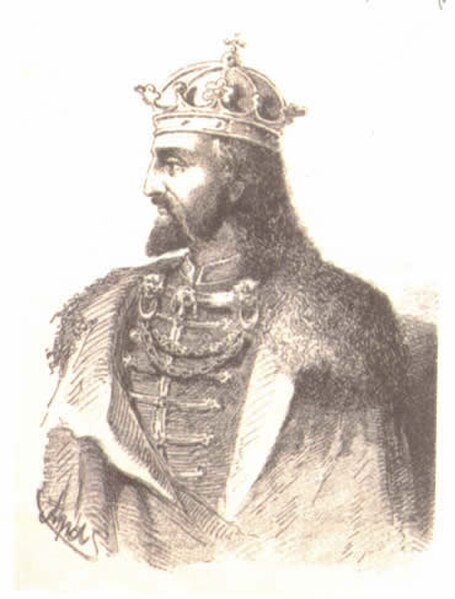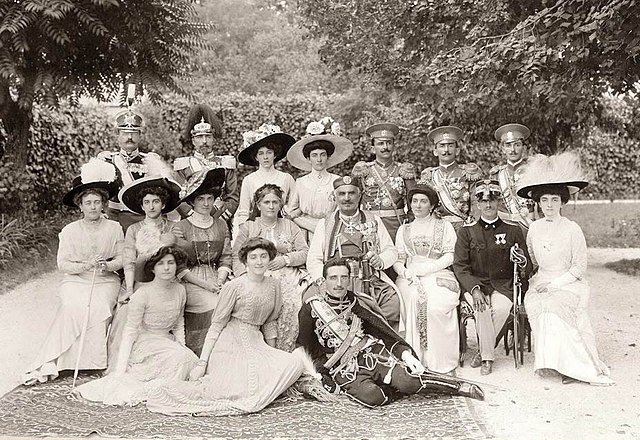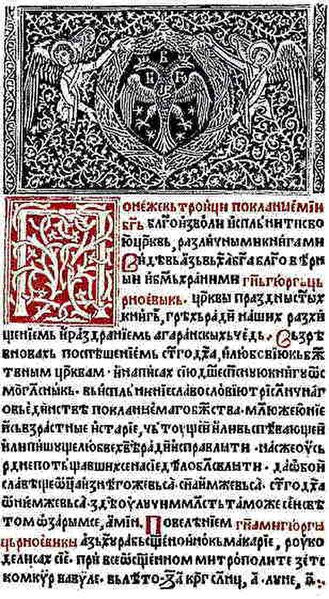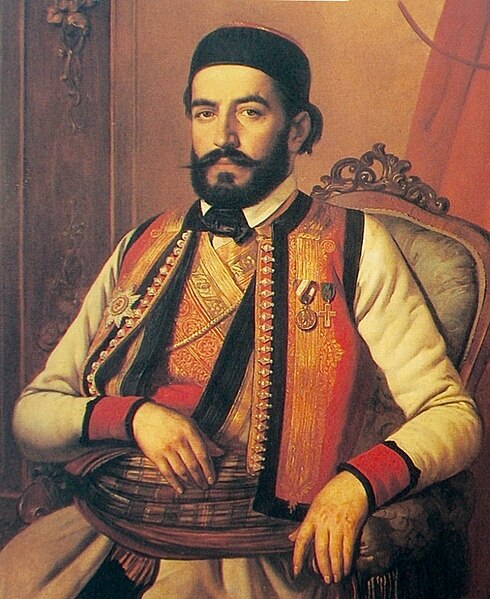Montenegro is a country in Southeast Europe, located in the Balkans. It is bordered by Bosnia and Herzegovina to the north, Serbia to the northeast, Kosovo to the east, Albania to the southeast, and Croatia and the Adriatic Sea to the northwest with a coastline of 293.5 km. Podgorica is the country's capital and its largest city; it covers 10.4% of Montenegro's territory of 13,812 square kilometres (5,333 sq mi), and is home to roughly 31% of its total population of 621,000. Cetinje is the former royal capital and cultural centre of Montenegro and is the location of several national institutions, including the official residence of the President of Montenegro.
Ruins of the ancient city of Doclea
Constantine Bodin, medieval King and the ruler of Duklja
Battle of Vučji Do, 1876, major battle of the Montenegrin-Ottoman War
Royal family of Montenegro: King Nicholas I with his family. The Petrović-Njegoš dynasty ruled Montenegro continuously for almost 200 years.
Montenegrin is a normative variety of the Serbo-Croatian language mainly used by Montenegrins and is the official language of Montenegro. Montenegrin is based on the most widespread dialect of Serbo-Croatian, Shtokavian, more specifically on Eastern Herzegovinian, which is also the basis of Standard Croatian, Serbian, and Bosnian.
A page of Oktoih prvoglasnik, printed at the Crnojević printing house in Cetinje, 1494.
Petar II Petrović-Njegoš was a Prince-Bishop of Montenegro, poet and philosopher whose works are widely considered some of the most important in Montenegrin literature.






